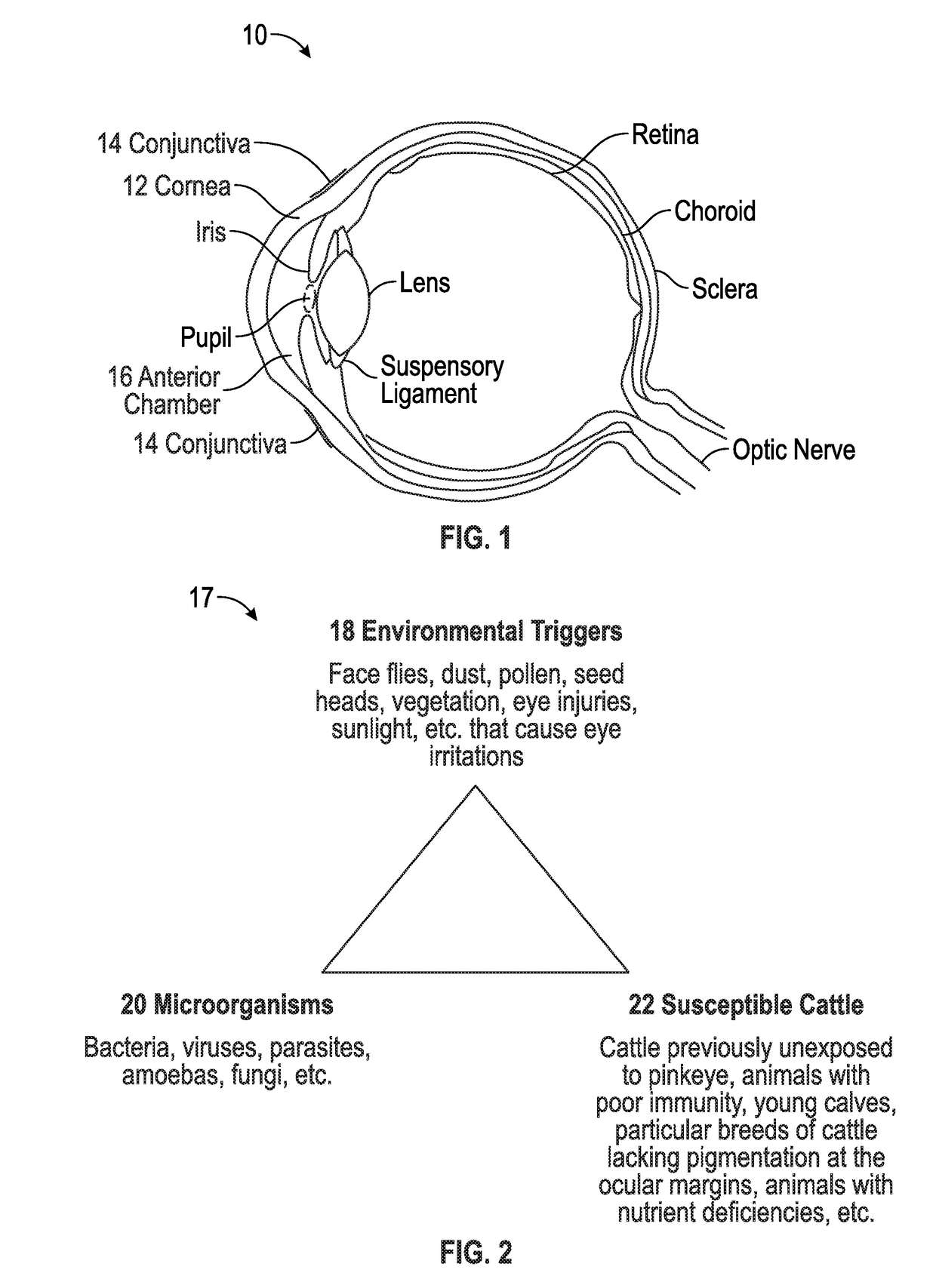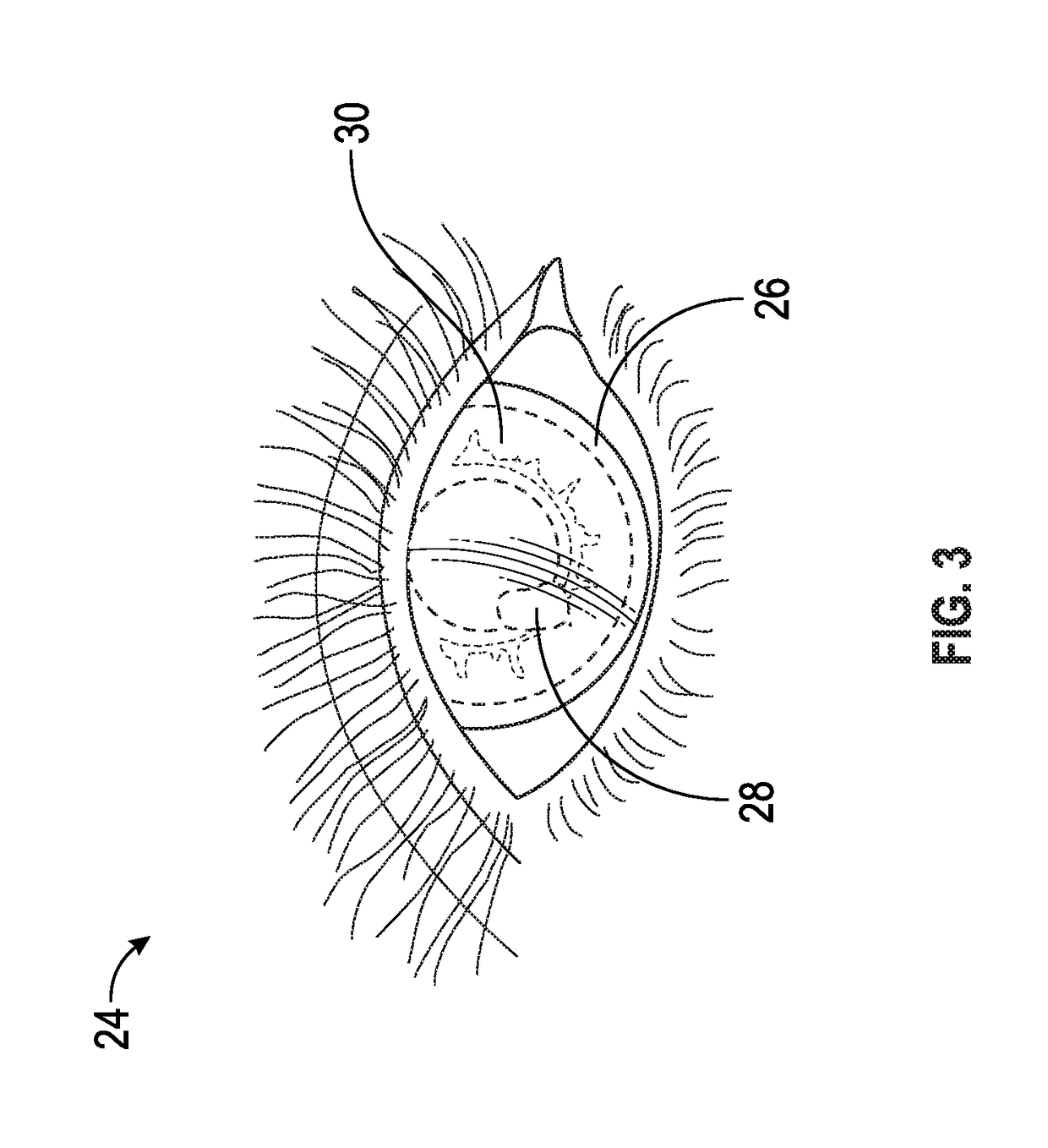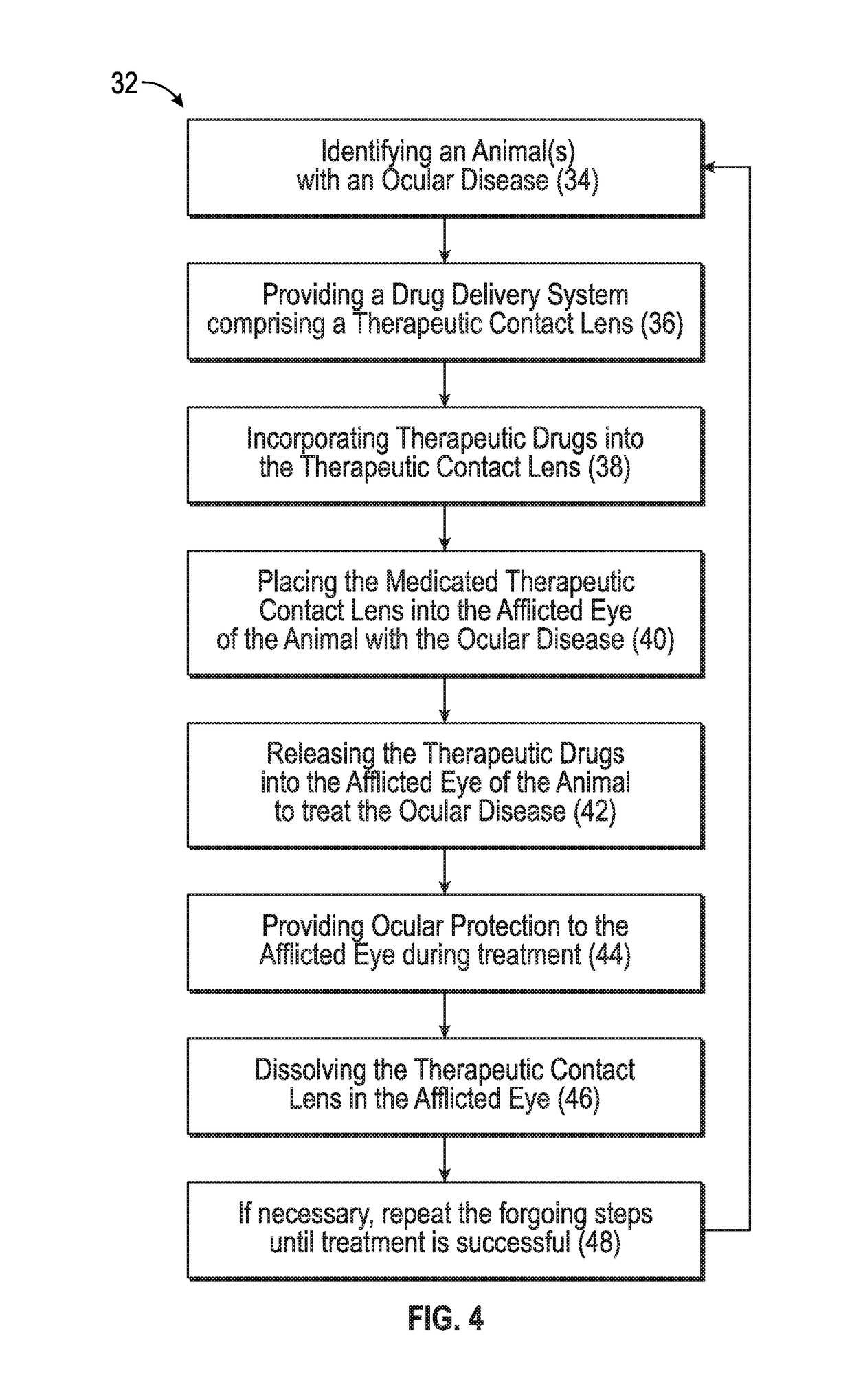Drug delivery system and method of treating ocular diseases in animals
- Summary
- Abstract
- Description
- Claims
- Application Information
AI Technical Summary
Benefits of technology
Problems solved by technology
Method used
Image
Examples
Embodiment Construction
[0026]FIG. 1 illustrates a side view of the parts of the eye (10) in animals. As shown in FIG. 1, ocular diseases may originate in animals after eye irritants, such as dust, pollen, face flies, or grasses, scratch the cornea (12) and / or conjunctiva (14) of the eye (10). Once irritated, microorganisms (e.g., bacteria, viruses, parasites, amoebas, fungi, etc.) invade the cornea (12) and / or conjunctiva (14) to cause an ocular disease. “Ocular diseases” in animals may include conjunctivitis (i.e., inflammation of the conjunctiva), keratitis (i.e., inflammation of the cornea), and / or keratoconjunctivitis (i.e., inflammation of the cornea and conjunctiva). Commonly known as “pinkeye,” these ocular diseases may be caused by the aforementioned microorganisms and / or allergens and affect a wide variety of animals. For example, IBK affects cattle and is primarily caused by the bacteria M. bovis. The incubation period for IBK is usually two to three days, wherein redness, swelling and inflammat...
PUM
| Property | Measurement | Unit |
|---|---|---|
| Fraction | aaaaa | aaaaa |
| Time | aaaaa | aaaaa |
| Mass | aaaaa | aaaaa |
Abstract
Description
Claims
Application Information
 Login to View More
Login to View More - R&D
- Intellectual Property
- Life Sciences
- Materials
- Tech Scout
- Unparalleled Data Quality
- Higher Quality Content
- 60% Fewer Hallucinations
Browse by: Latest US Patents, China's latest patents, Technical Efficacy Thesaurus, Application Domain, Technology Topic, Popular Technical Reports.
© 2025 PatSnap. All rights reserved.Legal|Privacy policy|Modern Slavery Act Transparency Statement|Sitemap|About US| Contact US: help@patsnap.com



